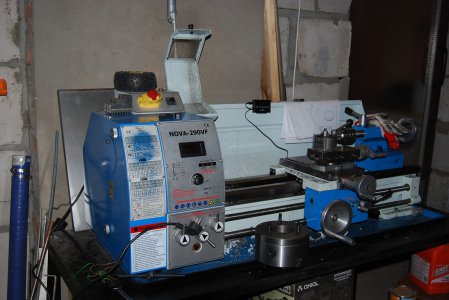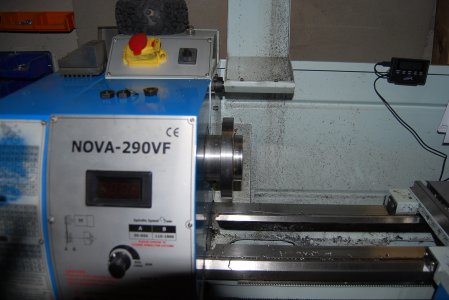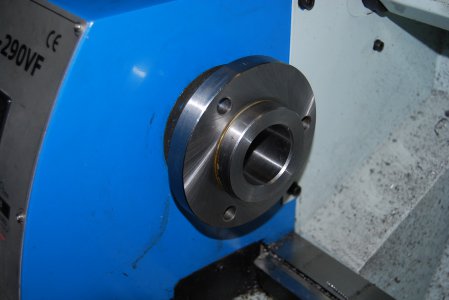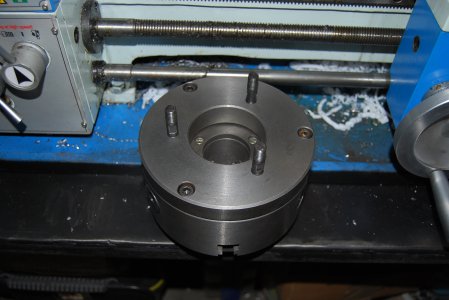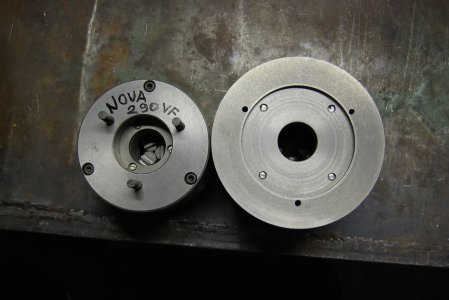- Joined
- Nov 27, 2012
- Messages
- 7,852
That lathe looks identical to a PM1127VF. I had originally ordered one these before changing my mind to get the 1236. Assuming that lathe is built to spec similar to the PM version, before the large bore model was available, the PM1127VF had a DIN 55021 spindle mount. This lathe does not have a cam lock or threaded spindle. It's basically the same type of spindle found on most mini lathes except the the DIN 55021 has a nose taper instead of a raised boss. Either the chuck adapter bolts onto the spindle using SHCS from behind the spindle or the chuck adapter has studs installed which again mounts on the back of the spindle with nuts. More details on chuck mounting with these types of spindle here.
Here's a photo of the spindle on my old mini lathe which is similar:
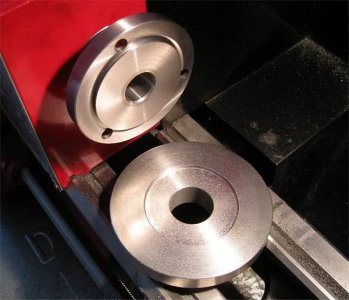
I hated changing chucks on that lathe. The back of the spindle has counterbores for the SHCS to sit in. Space was tight & it required a shortened hex key to loosen the SHCSs, it was a slow process.
PM's site no longer lists the spindle as a DIN 55021. I assume it has to do with when the large bore model was released. I hear the PM1127VF no longer uses the DIN 55021 spindle but mounting is still essentially the same, just doesn't have a taper for the nose anymore. I think someone called it a C3 mount like on their 10x models but I'm not sure if that's actually true. I can't find any specs on a C3 type spindle.
In relation to the OP's question, if your spindle is similar, the mounting bolt pattern is not critical as the boss/register (or if you have a nose taper) is what you would rely on to locate the chuck adapter. The bolts just keep it attached to the spindle. You could make a short transfer puch & try to get enough of a mark on the adapter you make to indicate the holes. When I made an adapter for my mini lathe I ran into the same issue & did not have a mill. There was so little room I improvised my putting double sided tape on the spindle holes & pressed the adapter on to it to leave an impression of the holes. It managed to work out fine for me. Photo
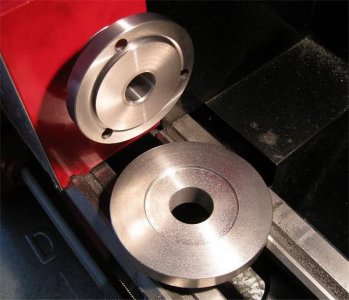
Here's a photo of the spindle on my old mini lathe which is similar:

I hated changing chucks on that lathe. The back of the spindle has counterbores for the SHCS to sit in. Space was tight & it required a shortened hex key to loosen the SHCSs, it was a slow process.
PM's site no longer lists the spindle as a DIN 55021. I assume it has to do with when the large bore model was released. I hear the PM1127VF no longer uses the DIN 55021 spindle but mounting is still essentially the same, just doesn't have a taper for the nose anymore. I think someone called it a C3 mount like on their 10x models but I'm not sure if that's actually true. I can't find any specs on a C3 type spindle.
In relation to the OP's question, if your spindle is similar, the mounting bolt pattern is not critical as the boss/register (or if you have a nose taper) is what you would rely on to locate the chuck adapter. The bolts just keep it attached to the spindle. You could make a short transfer puch & try to get enough of a mark on the adapter you make to indicate the holes. When I made an adapter for my mini lathe I ran into the same issue & did not have a mill. There was so little room I improvised my putting double sided tape on the spindle holes & pressed the adapter on to it to leave an impression of the holes. It managed to work out fine for me. Photo



